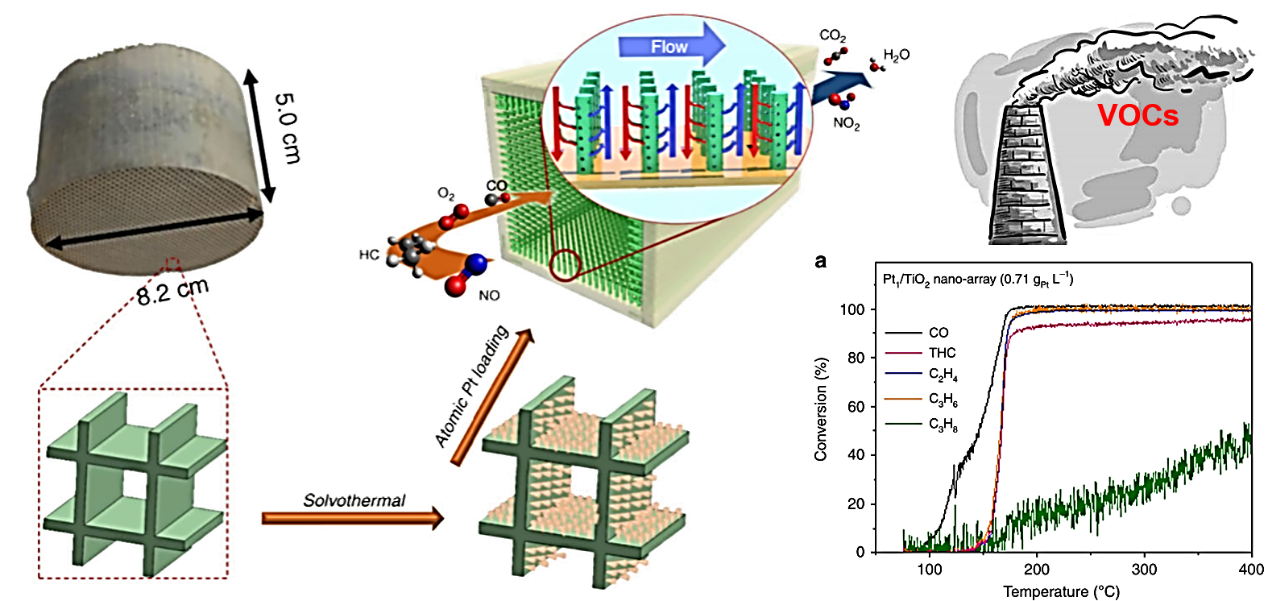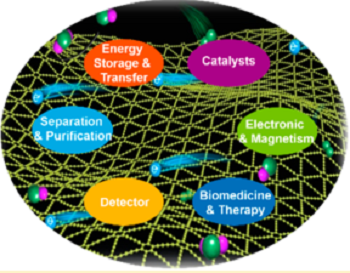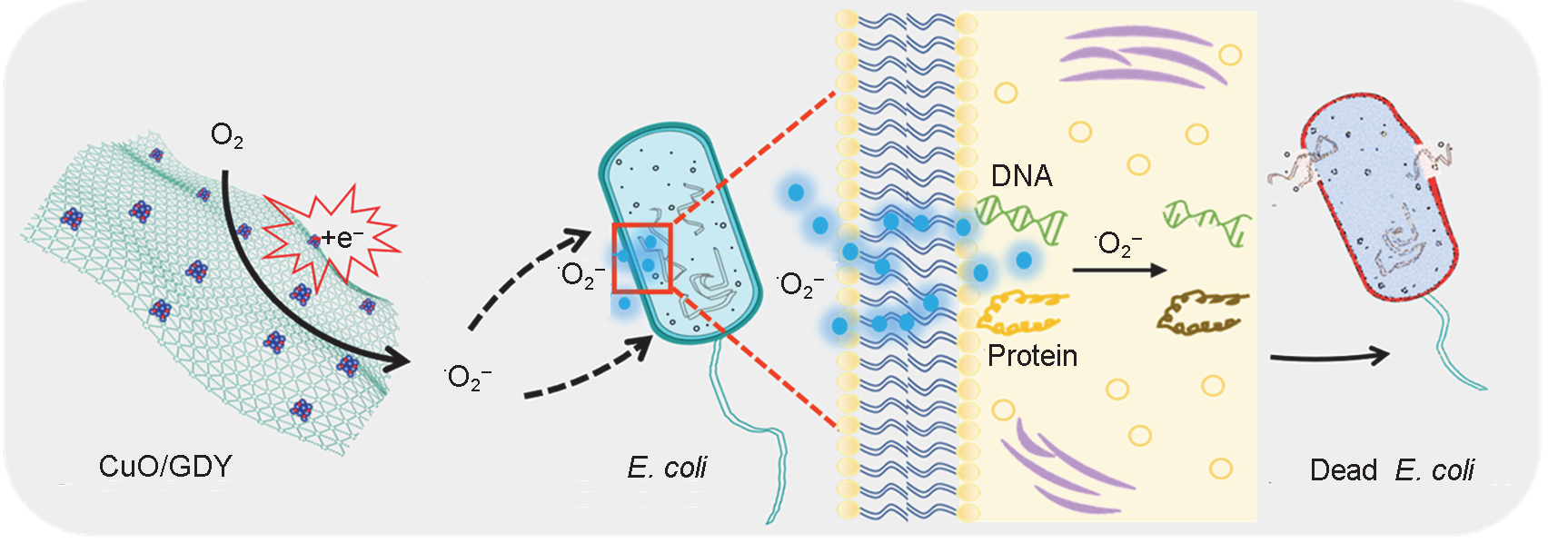Direction 1: Exhaust Emission Control of Motor Vehicle
The emission of particulate matter in diesel exhaust takes a heavy toll on both atmosphere and human health. Diesel particulate matter filter (DPF) can significantly reduce particulate matter emissions, as it can effectively capture particulate matter (including soot particulate matters, ash, etc.) in diesel exhaust. Our research group is therefore committed to further researching and forming a new type of efficient CDPF based on previous research to improve the regeneration performance of DPF on the one hand, and improve the catalytic performance of catalysts to achieve the recycling of DPF on the other hand. This is of great significance in controlling exhaust emission and preventing pollution.


Direction 2: Control of Volatile Organic Compounds (VOCs)
VOCs is a main air pollutant. Research has found that catalytic oxidation is a promising technique to remove VOCs. Our research group is committed to research and develop new types of high-efficiency catalytic agents, mainly noble metal Pt based catalysts, transition metal Cu based catalysts and perovskite type catalysts. Meanwhile, we have been deeply exploring the catalytic active sites and catalytic mechanisms and revealing the structure-activity relationship of the catalyst, providing clear guidance for the industrial development of high-efficiency catalytic oxidation equipment to remove VOCs .
(1) noble metal type catalysts
Noble metal catalysts are currently one of the most widely used catalysts for catalytic oxidation of VOCs. Our research group has developed a series of Pt-based monolithic catalysts with excellent performance, which have achieved effective conversion of alkane pollutants in simulated vehicle exhaust atmospheres. At the same time, this monolithic catalyst has excellent low-temperature activity and sulfur resistance, and has broad application prospects.

(2) Transition metal type catalysts
Non noble metals (mainly transition metals) and their oxides have the advantages of high reserves, low prices, and high activity, and are expected to become the next generation of VOCs catalytic oxidation catalysts. Therefore, our research group is committed to developing efficient transition metal VOCs catalytic oxidation catalysts. We improve the stability and anti-toxicity of copper-based catalysts through surface interface regulation. Through structural optimization, clusters and single atom copper catalysts are also expected to make breakthroughs in the field of VOCs catalytic oxidation.

(3) Perovskite type catalysts
Perovskite oxides have the advantages of low cost, high hydrothermal stability, and good resistance to poisoning, making them highly promising substitute catalysts for noble metals. We are committed to developing new methods, such as in-situ solution self-assembly, to synthesize structurally controllable ordered macropore perovskite La0.8Sr0.2CoO3 monolithic catalysts, and designing surface control strategies such as reduction and acid etching, significantly improving the catalytic purification efficiency of perovskite type catalysts for gaseous pollutants.

Direction 3: Nano-Catalytic Material
As a novel two-dimensional carbon material, graphdiyne (GDY) is well-known for its unique pore structure and electronic structure. It has great potential in energy, catalysis and many other fields. In recent years, we have been committed to the design of new GDY based catalysts, aiming to thoroughly study their intrinsic characteristics and explore their applications in the environmental field, so that we could provide new research ideas for the development of catalysts.


4. Antibacterial and antiviral materials
Because of its low cost, good chemical and physical stability, copper(II) oxide (CuO) has received special attention as a potential candidate for antibacterial agents. However, developing new CuO nanocomposites with improved antibacterial properties and unraveling the interface promotion mechanism has always been a challenge. Our research group is committed to the design and development of new CuO based antibacterial materials. At present, we have developed a new type of copper(II) oxide/graphdiyne composite antibacterial material, which has excellent antibacterial activity, 19 times and 7.9 times the antibacterial activity of graphdiyne and blank copper(II) oxide. The strong molecular oxygen activation performance of this composite material is the main reason for bacterial inactivation. In addition, we also have mature preparation methods for nano CuO with different morphologies, which is expected to develop new and efficient antibacterial materials.



